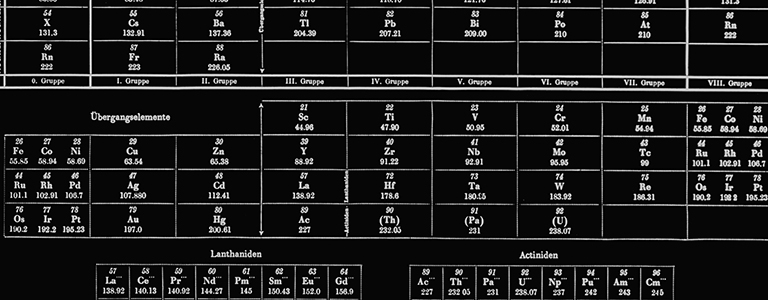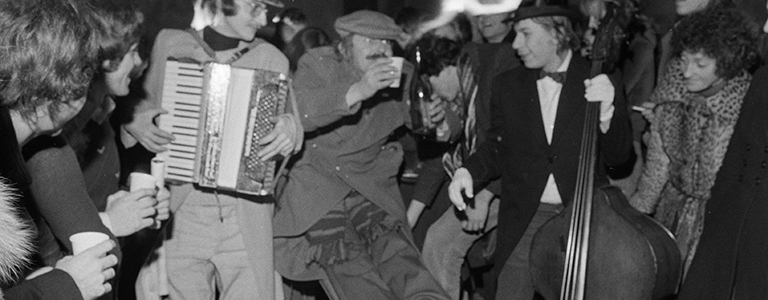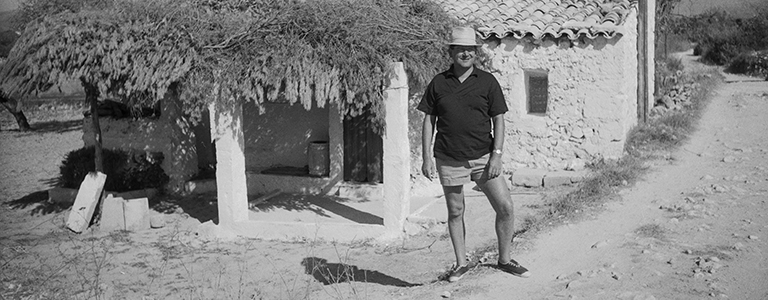From the 2nd of February to the 9th of March 1952, the travelling exhibition “Frank Lloyd Wright – Sixty Years of Living Architecture” made a guest appearance at the Zurich Kunsthaus. The reportage by Comet Photo AG (Zurich) immortalises in eighteen shots the obvious joy of discovery that the huge, almost overwhelming architectural models triggered in the public. Today’s viewers of this historical photo series will not fail to notice the contrast between the avant-garde appearance of Wright’s buildings and the out-of-fashion clothing of the museum visitors. However, if one takes clothing seriously as a cultural medium – and not as an anecdotal addition to the “actual” image content – it is precisely fashion that offers itself here as a common denominator between architecture, photography or photojournalism and personal image cultivation. The relationship between modernism, which from the beginning aimed at a comprehensive reform of life, even a permanent revolution along the lines of the technical-scientific innovation process, and fashion has always been fraught with tension and marked by contradictions. Such image sources as those of the Wright exhibition in Zurich in 1952 are irreplaceable for examining the history of architectural reception.
IMAGE ARCHIVE
The Limits to Growth
At the beginning of March, 2.3.2022, is the 50th anniversary of the publication of the report on the future of the world economy, The Limits to Growth, by the Club of Rome. It was written by the US economist Dennis L. Meadows and his wife Donella Meadows and the Norwegian Jørgen Randers.
“Metzgete”
It’s November and it’s happening again in many places in the country, the Metzgete. “Metzgete” literally means “slaughter” in Switzerland and in the extreme southwest of Germany, but it also stands collectively for all the dishes that are typically prepared from blood, offal, bacon and belly or head meat (usually from the pig) immediately after slaughter … (Wikipedia). Comet photographer Jules Vogt, who one can assume was not averse to such feasting, created an impressive reportage of the slaughter of a pig and the subsequent feast in November 1968. Vogt meticulously documented the events with his usual closeness to the people.
The Comets: Jules Vogt
Another short portrait from our series on Comet photographers is dedicated to Jules Vogt. He was born on December 9, 1928 in Zurich, where he completed an apprenticeship as a photographer at Foto Saager from 1944 to 1946 and took courses at the School of Applied Arts with Hans Finsler. He then worked for Otto Pfister’s agencies, Illustrations- und Photopress AG (1961-1974) and Comet (1963-1996). After his time at Comet, Vogt was increasingly found in advertising and regularly photographed for Züspa, the Geneva Motor Show and various industrial companies. Vogt was also a renowned aviation photographer. Jules Vogt passed away on July 30, 2006 in Ascona.
International Year of the Periodic Table of Chemical Elements 2019
Who has not seen it hanging from the ceiling in endless hours of chemistry lessons, the large Periodic Table of Chemical Elements with its symbols, atomic numbers and atomic weights? This system was chosen by the United Nations as the theme of 2019:
Happy New Year 2019!
The proverbial “Slide into the New Year” was taken literally on 31.12.1974 by some Zurich residents on Grossmünsterplatz. To musical accompaniment and torchlight they slid down a small metal slide, dressed in winter clothes. Comet photographer Hans Witschi was on site and recorded the event.
Rome, Fontana di Trevi, 1961
The late Baroque Trevi Fountain in Rome by Nicola Salvi (1697-1751), completed in 1762 by Giuseppe Panini, became famous for the nocturnal bath that Marcello Mastroianni and Anita Ekberg took in Fellini’s La Dolce Vita (1960). One year after La Dolce Vita, the photograph by Comet photographer Hans Krebs was taken. It shows nuns throwing coins.
The Comets: on the occasion of Jack Metzger’s 100th birthday
The second photographer in our series about the players of Comet is Jack Metzger. He was born in Lucerne on 7.10.1918, so he could celebrate his hundredth birthday on Sunday.
Manneken-Pis, a strange, hybrid object
In our little series on the occasion of the Year of Cultural Heritage, another bronze sculpture in the urban space follows today. The “peeing boy”, created by Jérôme Duquesnoy in 1619, is a well-known fountain figure in Brussels. Catherine Emerson describes the figure as a strange, hybrid object:
225 years Louvre
The dream of a public art museum had already been cherished by several ministers of the ancien régime a few decades before the French Revolution as the Musée du Louvre in Paris was inaugurated on 10 August 1793 at the height of the revolution. Andrew McClellan writes:









